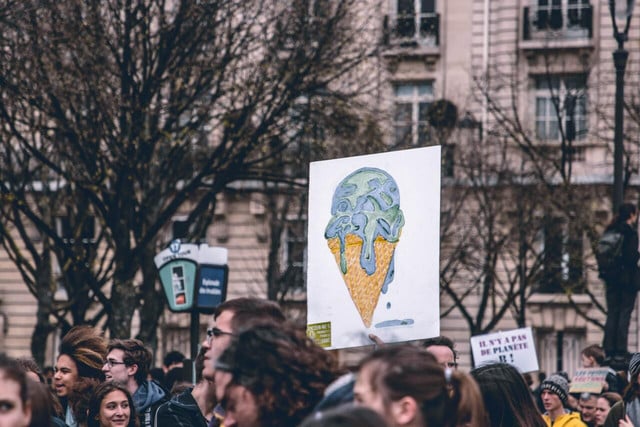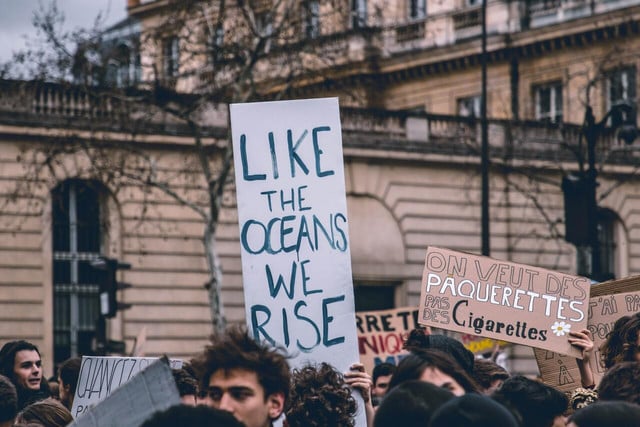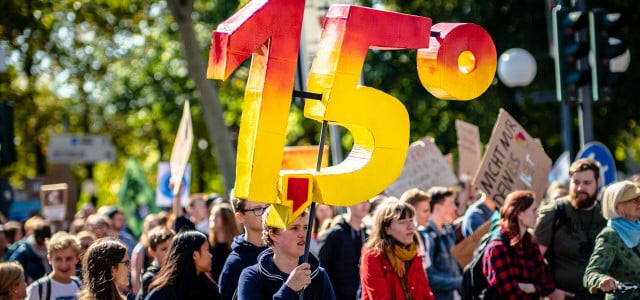The UN has warned that the world is still dangerously far from reaching its goal of limiting global temperature to 1.5C. With COP27 right around the corner, where do we go from here?
It’s not good news. The latest (October 2022) UN assessment has put a major dampner on hopes of the world reaching the Paris Climate Agreement goals. Set in 2015 during the historic summit, almost all of the world’s leaders agreed on the one, singular goal of working together and as individual nations to help limit the global rise in temperatures to 1.5C.
Doing so would be imperative to limiting the worst effects of climate change. The science is, by now, paintakingly clear — failiure to do so would mean the world as we know it will change irreversably. Mass extinctions, the melting of the icecaps, fires and floods — the consequences of a rise of just 2C are extremely frightening. However, according to the new report, the world will warm by around 2.8C this century with the current policies in place.

(Foto: Photo: CC0 Public Domain / Unsplash - Harrison Moore)
This analysis finds that new efforts to cut carbon would see global emissions fall by less than a single percent by 2030, when according to scientists, reductions of 45 percent are needed to keep the Paris Climate Agreement’s goal of a 1.5C limit in global temperature rises in our sites.
It’s been calculated that even if countries were able to hit the goal of net zero emissions by 2050, the earth would still rise in temperature by 1.8C. However, the UN report argues that as progress has been far slower than that promised during the 2015 summit, meeting even this global limit seems hugely unlikely.
Inger Andersen, the executive director of the UN Environment Programme (UNEP), said:
“This report tells us in cold scientific terms what nature has been telling us all year through deadly floods, storms and raging fires: we have to stop filling our atmosphere with greenhouse gases, and stop doing it fast.
We had our chance to make incremental changes, but that time is over. Only a root-and-branch transformation of our economies and societies can save us from accelerating climate disaster.
It is a tall, and some would say impossible, order to reform the global economy and almost halve greenhouse gas emissions by 2030, but we must try.”
So, Where Do We Go From Here?
While the overwhelming tone of reports published within the last week have been bleak, there is room for a small amount of optimism.
Despite Andersen’s doubts that the necessary emission cuts can be made by 2030, she pointed to the plummeting costs of renewables, major climate legislation in the US, and moves by pension funds to back low-carbon investments such as the rollout of electric transport.
Speaking of which, the State of Climate Action study says that a transition to sustainable travel is well underway. Globally, almost half of the buses sold in 2021 were powered by battery electric or fuel cell electric engines. Sales of electric vehicles have doubled from 2020, now accounting for almost 9 percent of new cars. Seeing as just one electric car on the roads can save an average 1.5 million grams of CO2 (the equivalent of four return flights from London to Barcelona), large changes in consumer habits are almost certainly moving us towards a greener planet.
This note of hope is also reflected in the International Energy Agency’s World Energy Outlook, published around the same time as the UN report. It’s thought that the energy crisis triggered by the war in Ukraine has the potential to expediate many countries’ move away from fossil fuels and towards more renewable forms of energy.
This report also finds that the countries such as the US, Japan, Korea and the EU will likely see a rise in clean energy investment of over 50 percent from today. This equates to roughly 2 trillion by 2030.
Are We Done For?



(Foto: Photo: CC0 Public Domain / Unsplash - Harrison Moore)
It might be too early to say whether time has completely run out for the pledges set about in the Paris Climate Agreement. But, these latest reports have certainly made it explicitly clear that if huge — unprecedented — changes to society don’t happen soon, we will have missed our chance.
It can be easy to get bogged down with the scale of the task, and the correspondingly glacial pace of change. However, rather than seeing these reports as a declaration of failiure, choose to see them as a clarion call. Join climate action groups in your area, talk to your friends and family, and don’t give up on the changes you’ve made to your lifestyle — every small action makes a difference.
Read more:
- Do Carbon Offsetting Programs Actually Work?
- Bioeconomy: Growing the Economy with Renewable Resources
- The 6 Types of Renewable Energy – And Why We Need Them Now
Do you like this post?






